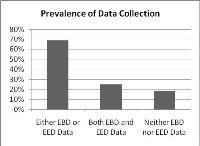Eco-Effective Design and Evidence-Based Design: Removing Barriers to Integration

Evidence-based design (EBD) and eco-effective design (EED) are very pertinent to healthcare design today, as both push to achieve increased or improved positive outcomes in human and/or environmental health. Eco-effective design gives rise to buildings that generate improved ecological health and indoor environmental quality. Evidence-based design gives rise to buildings that generate positive health outcomes in hospitals through a growing body of best practice strategies that are informed by research and practical knowledge. Eco-effective and evidence-based design are two trends that are significantly impacting healthcare architecture today. Although both movements have directly impacted recent healthcare architecture, they are often implemented separately, and some consider them to be in conflict with one another. This study intends to better understand the intersections between these two trends, and how successful hospitals have and are incorporating and measuring them.


Add comment
Log in to post comments